Hair shedding scores represent a visual appraisal of the extent an animal has shed their winter coat. Reported on a scale of 1 to 5, the lower the assigned score, the more hair an animal has shed. This MU Extension guide is meant to provide further detail and guidance on hair shed scoring animals.
Hair-Shedding Scores
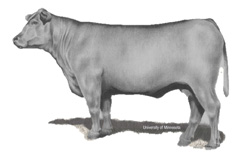
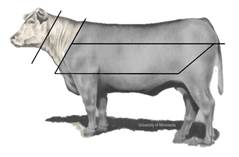
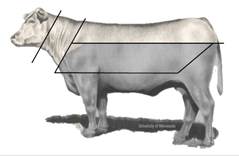
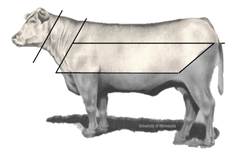
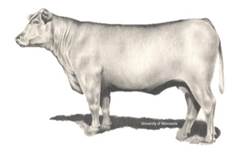
5
Cattle have shed none (0%) of their winter coat. Thick, longer, hair still covers their entire body.
4
Cattle have shed only 25% of their winter coat. Due to how cattle shed hair, this will mainly occur around their neck but may also include their topline.
3
Cattle have shed approximately half (50%) of their winter coat. In addition to the hair along the neck, this will include hair along the body, often in patchy spots.
2
Cattle have shed 75% of their winter coat. There will be a small amount of hair remaining along their flank and hindquarter.
1
Cattle have shed all (100%) of their winter coat. All that remains is a shorter, smooth, summer coat.
Hair Shedding FAQ
Why are hair shedding scores measured?
Early summer hair shedding is a proven trait of economic relevance for producers in areas of increased heat and humidity and those grazing endophyte-infected (hot) fescue. Animals who shed their winter hair coat sooner are less likely to be exposed to heat stress in the summer. These animals are also more likely to wean heavier calves and remain productive in a herd, for longer. More information on hair shedding and heat tolerance can be found in MU Extension publication G2014, Hair Shedding Scores: A Tool to Select Heat Tolerant Cattle guide sheet.
More recently, a relationship between hair shedding scores and length of daylight has been found. Hair shedding may serve as an indication of an animal’s ability to sense and respond to their environment. Such a relationship would make hair shedding useful for producers outside the southern U.S.
When is the best time to score my animals?
The time to evaluate cattle for hair shedding will vary by geographical location and environmental conditions. Animals should be scored when the most variation exists within the herd. There should be a few animals who receive a score of 1, a few who score a 5, and a majority receiving a hair shedding score of 3. Cattle begin shedding their winter coat in late spring through the summer. For many locations, mid-May has been identified as an ideal hair shedding evaluation period. The hotter and more humid the climate the earlier in the spring scores should be collected.
How often do I score my animals?
It is recommended that hair shedding scores be obtained on the whole herd once a year. While additional data is never detrimental, based on estimates of the heritability (h2 = 0.35 to 0.42) and repeatability (r = 0.44) of hair shedding, at least three years of data collection on an animal is ideal for genetic evaluation purposes.
How does age affect hair shedding?
Yearlings and first calf heifers tend to have higher hair shedding scores compared to older, established cows. This does not necessarily mean that younger animals should be culled right away. Younger cows are, by default, the most nutritionally stressed as they are growing/raising a calf while also growing themselves. Keeping that in mind, hair shedding scores can be used to rank and select females within an age group, but likely shouldn’t be used across the whole herd.
Should I score my bulls?
Providing half of the genetic potential to the next generation, obtaining a hair shedding score on bulls is of equal importance. For seedstock breeders, this serves as an act of customer service for potential buyers as well as knowledge for your breeding program. For commercial producers, it is an opportunity to make informed purchasing and breeding decisions. Please note that males tend to start shedding approximately two weeks before females.
What if I do not graze endophyte-infected fescue?
The genetic correlation of hair shedding while cattle are or are not grazing hot fescue is 0.93. Furthermore, when treated as two different traits, the estimated breeding value (EBV) for hair shedding either on or off fescue is 0.99. Therefore, hair shedding on or off endophyte-infected fescue can be treated as the same trait.
What if I do not live in the Southeastern U.S.?
Due to its association with heat tolerance and fescue toxicosis, hair shedding has been identified as a regional trait of interest. The genetic relationship between hair shedding score and daylight may allow these scores to indicate an animal’s ability to adapt to changes in their environment. This would make hair shedding a globally applicable selection criterion.
What if I do not have a hair shed EPD to use?
Hair shedding is a moderately heritable trait (h2 = 0.35 to 0.42). This means that incorporating a hair shedding score into culling and replacement heifer selection decisions will result in genetic change over time.